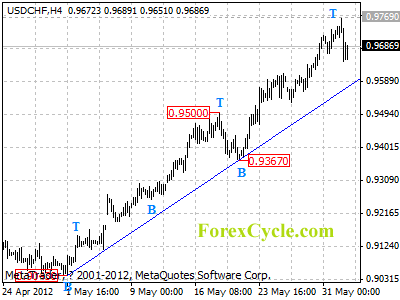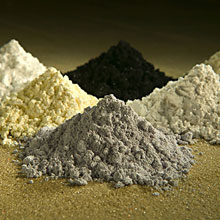By Central Bank News
A brief spurt of optimism over the global economic recovery has now evaporated and volatility has returned to financial markets as investors question the prospects for economic growth, the Bank for International Settlements said.
“Investors are having doubts about everything: About growth, about the financial health of sovereigns and about political stability,” said Stephen Cecchetti, economic adviser to the Swiss-based BIS, known as the central bankers’ bank.
“News on economic growth has been disappointing not only in the euro area, but also in the United States and in emerging market economies,” he told reporters in a telephone briefing as the BIS released its latest quarterly review.
Stock markets tumbled on Friday as data showed that the pace of U.S. employment growth weakened, output from China’s factories slowed and Europe’s manufacturing sector continued to contract.
But emerging economies, the engines of global growth in recent years, could provide a beacon of hope for some of Europe’s beleaguered countries, such as Greece and Spain.
“There is good news here, emerging market economies used to have problems similar to those of the euro area periphery today; that is they had a lack of credibility that often forced them to tighten policies during downswings, thus putting further pressure on output, Cecchetti said.
Over the last decade many emerging economies have been able to carry out more mature fiscal and monetary policies that helped cushion downturns, similar to the more advanced economies, helping stabilize the global economy, the BIS said.
In it’s review — which shows that cross-border lending fell in the final 2011 quarter as euro area banks continued to retrench — BIS also looked at the countercyclical policies of emerging markets, the changing role of the offshore Chinese renminbi market and the threats from the growth of central bank balance sheets in emerging Asian economies.
Cross-border lending by major international banks recorded its largest decline in the fourth quarter of 2011 since the final quarter of 2008, following the collapse of Lehman Brothers, BIS said.
The decrease of $799 billion, or 2.5 percent, was driven mainly by a $637 billion fall in interbank lending as international banks cut back in their lending to euro area banks.
But even though market conditions remain difficult for a number of banks from Southern Europe, it is a far cry from 2008 when major banking relationships collapsed and central banks scrambled to prevent markets from freezing up.
Following the European Central Bank’s long-term financing operations in December, which restored confidence and helped avert a bank funding crises, Europe’s banks returned to the markets.
In the first quarter of 2012, global gross issuance of international debt securities rose 40 percent to $2.5 trillion, the strongest since the second quarter of 2008, with European borrowers the most active.
The BIS review covers the three months from March through May, a period that started out on an optimistic note following the ECB’s move and positive U.S. economic news.
But optimism in financial markets began to evaporate in the second half of March as it became clear that monetary policy alone would not solve the euro area’s debt problems. The first signs of weaker economic data from the US and China also cast doubts over the strength of the global economic recovery, prompting investors to reconsider the strength of growth in emerging markets.
With government debt continuing to expand in most advanced economies, BIS’ Cecchetti called on politicians to get to the root of the problems and tackle such thorny issues as unfunded social insurance schemes and healthcare.
“The challenges that we are facing are structural and require structural solutions. Short-term fixes will not work unless authorities address the underlying problems and the various problems are intertwined. For example, the solvency of banks and sovereigns are closely linked, so they need to be addressed simultaneously,” he said.
Article Source: http://www.centralbanknews.info/2012/06/optimism-over-global-recovery.html


